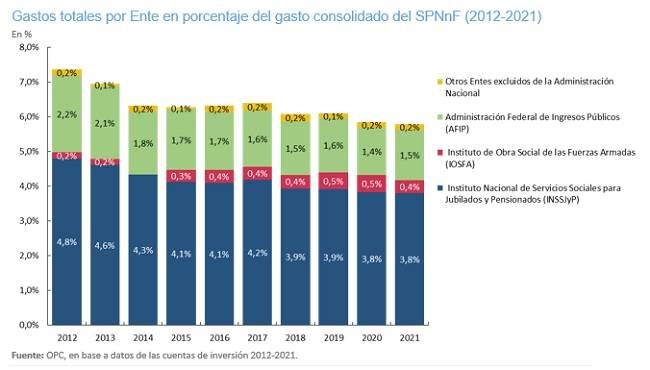- In fiscal year 2022, the national agencies identified as “Other Entities” recorded expenditures equivalent to 1.55% of the Gross Domestic Product (GDP) and resources representing 1.73% of GDP, thus improving the result of the previous year, in which this subsector also recorded higher revenue than expenditures.
- As of fiscal year 2020, the subsector was in surplus in the order of 0.2% of GDP given the positive results of the Federal Administration of Public Revenues (AFIP) and the National Institute of Social Services for Retirees and Pensioners (INSSJP).
- There was a gradual but systematic decrease in the subsector’s expenditures over the last ten years, from 1.77% of GDP in 2012 to 1.55% in 2022, basically due to the fall in staffing and personnel expenses and transfers to the private sector to provide services to INSSJP beneficiaries.
- In the last decade, INSSJP and AFIP accounted for an average of 65% and 27%, respectively, of the subsector’s revenues.
- Other Entities together employ almost 38,000 employees, 8% of the total staff of the Executive Branch and the Judicial Branch combined, a figure that decreased in the last decade.
- This subsector has its own systems to generate accounting, financial and budgetary information, and the obligation to periodically submit information to the Ministry of Treasury, a duty that in some cases is partially fulfilled.
- The large budgetary systems (SIFEP or SIDIF) do not provide information on the recipients of transfers to private parties or on the progress in the physical execution of their budgets.
- As of 2002, “Other Entities” were excluded from the scope of the National Budget Law

